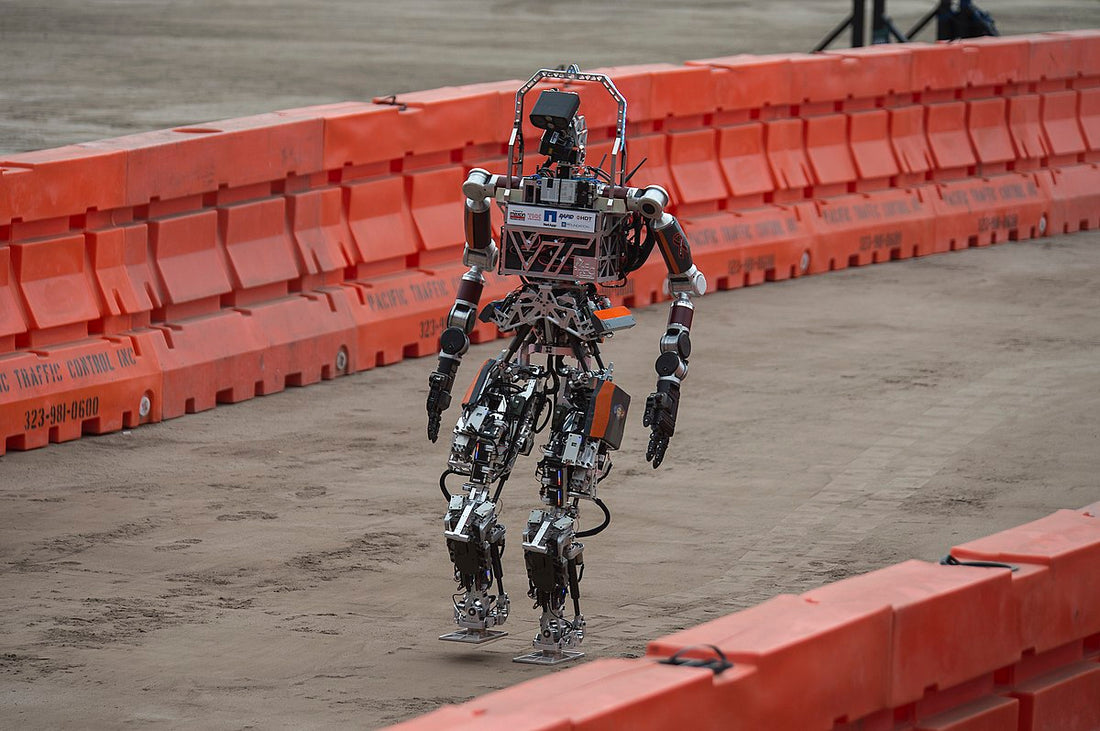How Has DARPA Imagined the Future of Wristwatches?
The unquantifiable nature of watches is that these little mechanical objects can be imbued with stories of service, sacrifice, and relationships. When W.O.E. covers watches, we often shy away from product reviews and instead look at the human element that makes watches meaningful.
But to DARPA, the Defense Advanced Research Projects Agency, a watch certainly isn’t a vessel for men and women who have served the nation to mark their achievements or service. It isn’t actually about the stories. A watch can only play one role: to provide the United States with a technological advantage against adversaries. DARPA’s mission is simple:
To make pivotal investments in breakthrough technologies for national security.

When it comes to modifying and creating watches for the purpose of gathering intelligence and performing counterintelligence operations, the Agency’s in-house Directorate of Science & Technology (DS&T) is responsible. More on that HERE. (The name of the Center/Directorate has changed over the years, but the mission remains the same).
DARPA’s scope is much different. It spans the entire Department of Defense, meaning the projects they lead have a much broader national security application beyond intelligence collection. As an Agency solely dedicated to Defense, the mission of the organization is not linked to a single operational capability, instead it serves as a “technological engine” that supplies the entire DoD with advanced solutions to maintain US technological superiority. The lead picture of this article is RoboSimian during a DARPA robotics challenge, designed to advance the use of robots in disaster situations.
In Hollywood, DARPA is often depicted as the secret underground laboratory that’s reverse engineering alien spacecraft or working on time travel machines. This isn’t an accurate portrayal, instead DARPA is headquartered in the DC burbs and works on sometimes-mundane projects that serve the entire DoD, not just the stuff having to do with propulsion systems borrowed from little green men and global weather modification platforms.

Defense Advanced Research Projects Agency, Headquarters Arlington, Virginia, United States
DARPA is credited with playing a pivotal role in creating the internet, providing the world with GPS technology, and even HAARP, a research station in Alaska that gathers data about the ionosphere. It’s also a popular subject of conspiracy theories, even more so today in the age of podcasts and social media.
If there’s a piece of equipment the military uses, DARPA looks to optimize it and provide the United States with a competitive advantage when it comes to national security and defense, and that even means the humble wristwatch has been scrutinized by DARPA to maximize its role on the battlefield.
The Atomic Clock–From Laboratory to Soldiers’ Wrists

Patek Philippe & Hewlett Packard Atomic Clock (circa 1960s) (Image Credit: M.S. Rau Antiques / @DrGarcia)
Neophytes in the watch world often use accuracy and precision interchangeably. Accuracy in timekeeping is how close a clock or watch can come to a constant true and accepted value. Precision, on the other hand, is how much variance there is in measuring said time. Here’s where it gets interesting–both the most accurate and most precise clock is the atomic clock. An atomic clock works by taking cooling down cesium-133 atoms and then measuring the oscillations at the atomic level with specialized lasers. Cesium-133 “vibrates” at 9,192,631,770 times a second, providing a standardized unit to measure time. This produces the most accurate–and most precise clock in the world. A number of universities and research labs maintain atomic clocks around the world, like the National Institute of Standards and Technology (NIST) in Colorado and Maryland; and the National Physical Laboratory in the United Kingdom. Of course, Switzerland is home to one as well, at The Time and Frequency Laboratory at the University of Neuchâtel.

NIST physicist Judah Levine with the NIST time scale that maintains official U.S. civilian time. NIST atomic clocks are used to calibrate the time scale. (Photo Credit: NIST)
These laboratories occupy entire wings of campus buildings and research centers, but DARPA has the vision of using Microelectromechanical systems (MEMS) technology to shrink down the system and install it on a single chip. A chip-scale atomic clock would benefit DoD by not only creating a near-perfect time reference across all military forces, but greatly reducing the footprint increases the mobility of military communication systems. Additionally, it’s impervious to jamming. The first time this technology was mentioned was in a 2004 fiscal report prepared for the Subcommittee on Terrorism, Unconventional Threats and Capabilities, House Armed Services Committee, U.S. House of Representatives.
DARPA’s Projected Future Wristwatch Applications

This chip-scale atomic clock technology most recently became part of a larger DARPA initiative called Robust Optical Clock Network (ROCkN) in 2022. But instead of a theoretical study, the objectives are clearly defined: The clock was to be used aboard fighter jets, Navy ships, satellites, and eventually a wristwatch.
Modern GPS systems, communication systems, and even the internet, operate down to nanoseconds, and this is exactly why synchronization is still important. Timing matters here because packets of data need to be exactly where they need to be, when they need to be there. If it’s even slightly off the packets get scrambled or lost. Add in the threat of cyberwarfare and timing becomes even more important. Most atomic clocks have a +1/-1 variance over a time span of 31.71 million years. The idea with ROCkN is to get them down to an accuracy of a trillionth of a second. And every single device would be on one network, running at this level of accuracy. This is exactly the kind of moonshot idea the DARPA specializes in. As with most of their projects, this technology exists in the future.
After all, we’ve come a long way in 2023 from DARPA’s initial early-’90s vision for the wristwatch. Before the miniaturized atomic clock, DARPA conceptualized what would eventually become something functionally similar to the smart watch of today.

Patent document for wearable computer packaging device
Celebration and Skepticism Around Wrist-Computing
In 1998, Military+Aerospace Electronics magazine ran a piece titled DARPA Describes Vision of Wearable Computing. In it, author Chris Chinnock describes a DARPA-led program about a decade earlier, that allowed soldiers of the future to utilize “wearables”, like a wristwatch, to plug into a MIL-STD 1553 bus interface and run tests to determine feasibility of repair and maintenance in the field. The idea was that “Interactive electronic technical manuals would be on the wearable computer, and wireless communications would enable the operator to order replacement parts via the World Wide Web.” Wearables are still being researched and developed, during the Covid-19 pandemic, DARPA has invested in an early-detection projection leveraging the Oura Ring.

Air Force 18th Component Maintenance Squadron wearing a Garmin watch and an Oura ring as part of a 2021 study(Photo Credit:/ U.S. Air Force)
Beyond interacting with machinery on the battlefield, DARPA’s vision carried over to large-scale communication, much like the 1940s Dick Tracey model of using your wristwatch like a two-way radio and tracking device. DARPA-backed ViA Inc. of Northfield, Minnesota came close to developing a wristwatch that doubles as a folding computer, much like a laptop. The user would raise their wrist, flip open the screen, and type messages and commands with the other hand in addition to using voice commands.

But the idea wasn’t widely adopted. Wearing technology on your body–or wrist–took some getting used to, the story states:
People felt uncomfortable talking to the computer," says Dick Urban, deputy director of the electronic technology office at DARPA…There was a cultural barrier that was inhibiting the use of such a novel computing platform.
Those early users were certainly on to something. Not only is interacting with an inanimate object inherently difficult, it also introduces a security threat. In 2017, More than 3 trillion data points were compromised and used to reveal the location of sensitive military locations in Syria, Niger, and Afghanistan. Open-source data from Strava, an app designed for the Apple Watch, was used to pinpoint these locations.
Now it’s second nature to interact casually with a so-called smart watch, and one day DARPA’s atomic wristwatch will adorn the wrist of service members. But for now, the military will have to make do with G-shocks, Tudors, and Marathons. And that’s just fine with us here at W.O.E.
READ NEXT: Trading a Rolex to Get out of a Sticky Situation - Myth or Reality?










3 comments
Wristwatch with atomic oscillator
Patent number: 8922283
Interesting Patent by Rolex
Abstract: A wristwatch, which comprises an atomic oscillator comprising a system for detecting the beat frequencies obtained by the Raman effect.
Type: Grant
Filed: March 8, 2012
Date of Patent: December 30, 2014
Assignee: ROLEX S.A.
Inventors: Laurent Balet, Jacques Haesler, Steve Lecomte, David Ruffieux
The DARPA article is just fantastic, I just didn’t know. Didn’t know about such an important scientific Dept., its goals, & products. Your article has greatly initially informed me . I knew about the atomic clock(the big one), but not the goal for a miniature version. Thank you so much for the information, again a home run !! You guys are goood !!!
I used to be a PM at DARPA so fun to see this featured, thank you WoE